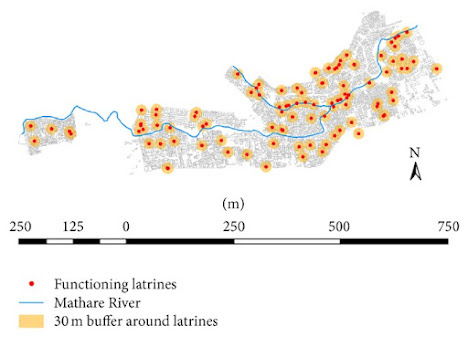The realities of WASH in Africa
Following
on from my last blog, where I mentioned the dichotomy between reports and realities
of the quality of water and sanitation, this blog will be looking at the realities
on the ground; faecal contamination of water, differentiation in supply and
data inadequacies.
Only 8 years until the Sustainable Development Goals (SDGs) are due to be achieved, and there is still major progress to be made. Especially in terms of water and sanitation, addressed by SDG6. In Africa in 2020, only 39% of people used safely managed drinking water and 27% used safely managed sanitation. Therefore, in order to meet the SDGs by 2030, there needs to be 12 times increase in the rate of progress on safely managed drinking water and 20 times increase for safely managed sanitation! Africa, particularly Sub-Sahara Africa, needs to be at the forefront of improving water and sanitation systems, as these regions currently face the least delivery, shown by Figure 1.
Figure 1: Percentage of population using at least basic drinking water services, 2015.
Nayebare’s
study on a small town in Uganda (Lukaya), East Africa, looks at the combination
of using the shallow subsurface for a supply of water and deposit of faecal
waste. Results show ∼55% of ‘improved’ water sources
comprising primarily shallow hand-dug wells show gross faecal contamination by
E. coli; and 51% of on-site sanitation facilities are unimproved (pit latrines
without slabs). This highlights how current monitoring and maintenance of
on-site facilities are insufficient in portraying realities and providing safe
water and sanitation systems. It also gives an example to the estimated 1.2 billion people
using improved water sources that are at an elevated risk of contamination.
Furthermore, her study shows that although awareness of basic hygiene is high,
it is not seen in practice – perhaps due to a lack of facilities (e.g. handwashing).
This shows that education needs to come hand in hand with the facilities and
tools to implement the hygiene practices.
Another
study,
investigating water quality in the city of Lilongwe, Malawi, saw microbial
contamination of drinking water. E.coli was detected in 59% of samples at kiosks
(shown in Figure 2) in unplanned areas. The perception of treated, piped water as
improved (free from contamination) isn’t realistic. The study also showed differentiation
in water quality within the same supply network – with lower income areas having
worse water quality than high income areas.
Figure 2: Water kiosk in Africa
Not
only can the quality of data be insufficient to allow effective management of
water and sanitation systems, but so can the quantity. Out of 54 African
countries, only 21
have estimates for safely managed drinking water and 26 for safely managed
sanitation. With no data, there is a lack of acknowledgment of issues and
progress cannot be monitored if changes are made.
Improvements in water supply and sanitation reduce faecal contamination can significantly reduce the rates of morbidity and severity of diseases such as ascariasis, diarrhoeal diseases and hookworm infection. Diarrheal diseases in children under 5 in Africa are the third leading cause of disease and death and were responsible for 330,000 under 5 deaths in 2015. Therefore, there needs to be investment in the implementation of safe on-site water and sanitation systems and their maintenance, as well as more rigorous monitoring, if SDG 6 is to be met. To achieve this, there needs to be greater accountability in the provision of these services. Perhaps this will come from the government, because, after all, water is a human right.




Your post demonstrates a reasonable grasp of water and sanitation issues in Africa. The case studies of Uganda and Malawi highlight important challenges of access to portable water (quantity) and the differential quality of water supply due to economic status. The posts are well presented showing engagement with relevant pieces of literature. Concerning the SDG and climate change, it will be useful to explore how local communities are adapting to water quality and quantity issues in a subsequent post.
ReplyDelete